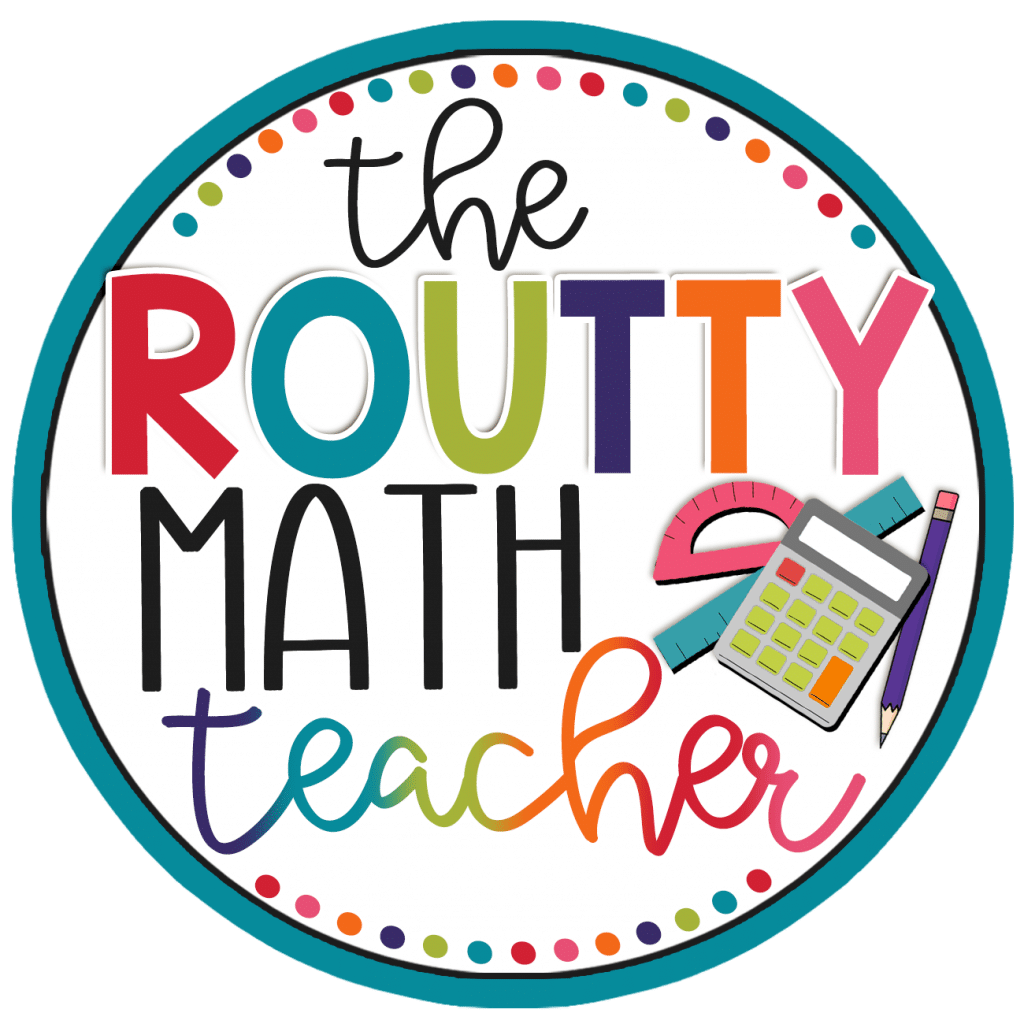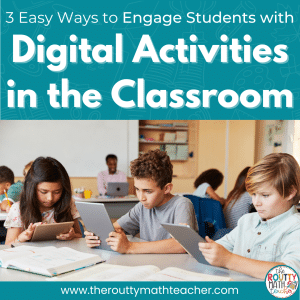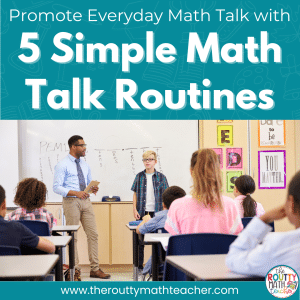
Small Group Math Activities
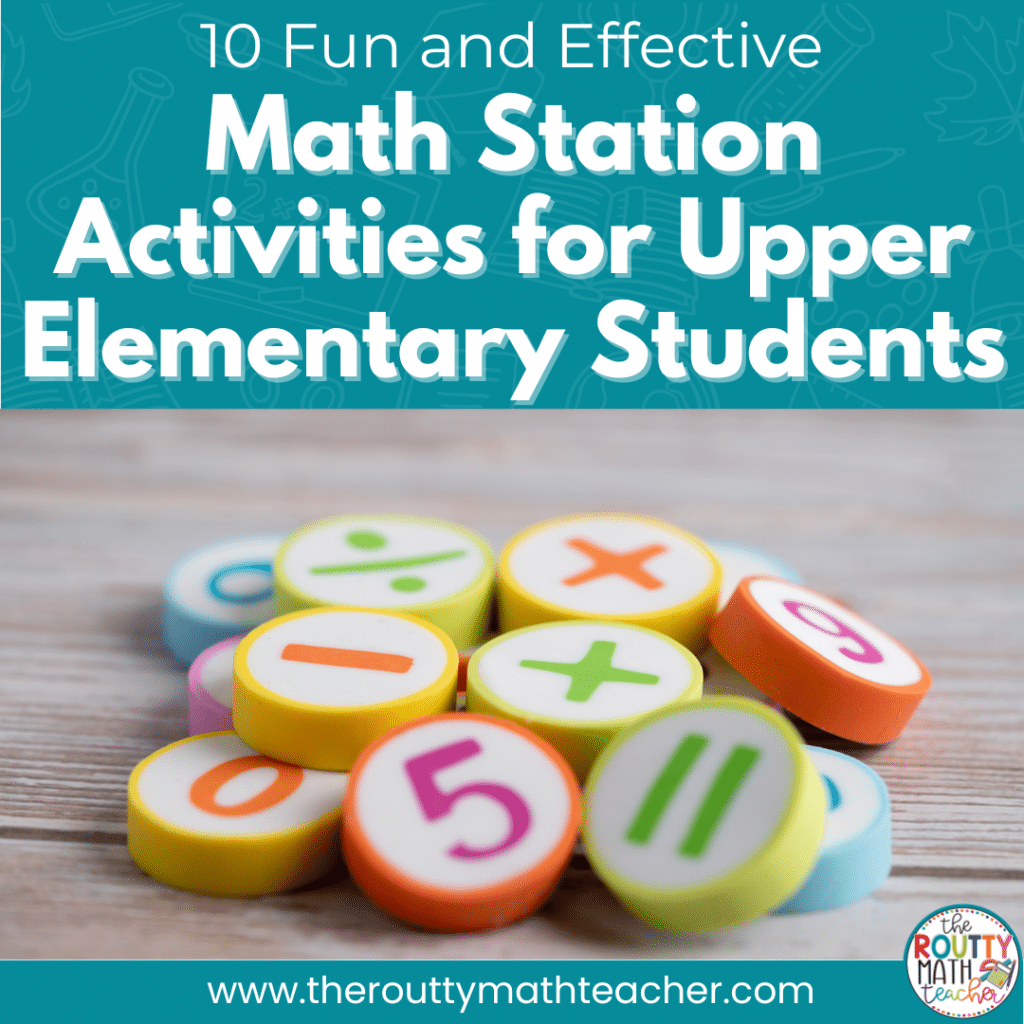
Discover small group math activities that promote student engagement and foster a love for math. This blog post explores 10 activities, including math games, hands-on manipulatives, real-world investigations, technology tools, problem solving activities, and more to help you transform your math stations into a dynamic learning environment.
I have a secret confession to make.
Teaching reading has never been my cup of tea.
Don’t get me wrong, I adore immersing my students in captivating books and opening their minds to new worlds.
But when it comes to reading workshop, let’s just say it didn’t exactly light a fire in my soul.
The never-ending cycle of reading from the textbook series and completing author’s purpose, inference, and comprehension worksheets felt mundane and, dare I say it, a bit dull. #yawn 🥱
Despite my best efforts, I struggled to make it truly exciting.
So, when the opportunity to introduce math workshop came knocking, I must admit, I wasn’t exactly jumping for joy.
It’s All About Engagement
Math stations are a powerful tool for promoting student engagement and deepening our students’ mathematical understanding.
By incorporating engaging activities into your math station rotations, you can create a dynamic learning environment that sparks excitement and curiosity in your students.
In this blog post, we will explore 10 engaging small group math activities that will captivate your students and inspire them to develop a love for math.
10 Small Group Math Activities for Any Math Station Rotation

Activity 1: Math Games Galore
Math games are a fantastic way to make learning fun and interactive. These small group math activities provide opportunities for students to practice math skills while communicating mathematically with their peers. Here are a few examples of card and dice games that can be incorporated into your math station rotations:
- War Games: This classic math game requires only a deck of cards. Partners each turn over a card and use their math skills to compare the numbers, such as whole numbers, fractions, decimals, or even simple expressions. The player with the higher value wins the round. Players continue playing until no cards are remaining.
- Cover-Up Games: This simple board game requires two dice. In turn, each student rolls the dice and completes the problem associated with the dice sum. Then, they cover the solution with a marker in a grid trying to get four in a row, column, or diagonal.
- Traditional Board Games: Pair a set of task cards with a traditional board game to create this math station activity. After correctly answering a question, students can roll a die or toss a coin to move along the path.
Activity 2: Hands-On Manipulatives
Hands-on manipulatives bring abstract math concepts to life, making them more concrete and tangible. These activities provide students with a visual and kinesthetic experience, enhancing their understanding of mathematical concepts. Consider incorporating the following manipulative-based activities into your math stations:
- Pattern Block Puzzles: Provide students with pattern blocks and challenge them to create different shapes and designs, exploring concepts like symmetry, fractions, and geometry.
- Base Ten Blocks: Use base ten blocks to reinforce place value concepts. Students can build and represent numbers and explore operations with whole numbers and decimals.
- Data Analysis with Spinners: Use spinners with different sections labeled with numbers or categories. Students spin the spinner multiple times, record the results, and represent the data they collected by creating a frequency table, bar graph, or dot plot.
Want to use math manipulatives but need more resources? Try virtual manipulatives!
Activity 3: Puzzle Power
Puzzles are not only engaging but also promote critical thinking and problem solving skills. They challenge students to think creatively and persevere through complex tasks. Here are a few puzzle-based activities to include in your math stations:
- Number Crossword: Create a crossword puzzle where students respond to math-related clues and fill in the corresponding numbers in the grid.
- Logic Grids: Challenge students with logic puzzles that require them to use deductive reasoning and critical thinking skills to solve.
- Sudoku: Provide students with Sudoku puzzles focusing on numbers, shapes, or mathematical operations, encouraging them to apply logical reasoning to complete the puzzles.
Activity 4: Real-World Math Investigations
Real-world math investigations allow students to apply their mathematical knowledge and skills to authentic situations. These activities promote problem-solving, critical thinking, and the ability to connect math and the real world. Consider the following examples for your math station rotations:
- Recipe Conversions: Provide students with recipes that need to be converted to serve a different number of people. Students must adjust ingredient quantities using proportional reasoning and fractions.
- Budgeting and Shopping: Give students a budget and a list of items with prices, such as a local grocery ad or restaurant menu. They must plan a shopping trip, choose items based on their budget, and calculate the total cost.
- Measurement Scavenger Hunt: Create a list of objects in the classroom or nearby hallway students need to measure using various units of measurement. Students will use rulers, measuring tapes, or scales to gather the data and record their measurements.

Activity 5: Technology Tools
Incorporating technology into math stations can engage students and provide interactive learning experiences. Consider utilizing the following online resources and educational apps:
- Online Math Games and Activities: Websites such as IXL Learning, Prodigy, and Math Playground provide opportunities to gamify the learning experience. Students can earn points and virtual rewards while building math skills.
- Digital Activities: Activities designed for Google Classroom and Seesaw provide engaging opportunities for students to use digital tools to review math concepts and skills.
- Digital Task Cards: Take task cards to the next level with digital task cards. Task cards created for use at Boom Learning or even with Google Forms can increase student engagement while students practice essential math skills.
Activity 6: Ready-Made Math Activities
In addition to creating your small group math activities, incorporating ready-made resources can provide a valuable and time-saving option for engaging your students. These pre-made activities offer an interactive and hands-on way to reinforce math skills and concepts.
- Electronic Flashcard Games: Electronic flashcard games provide an exciting and interactive way for students to practice and reinforce math facts. These games often offer various difficulty levels and customizable options to cater to students’ needs. Math Whiz and Math Shark are two of my favorites!
- VersaTiles: VersaTiles is a hands-on, puzzle-inspired activity with an interactive workbook system designed to reinforce math skills. Students use a unique answer case and answer tiles to complete activities and self-check their answers. It’s a favorite of my elementary and middle school students alike!
- Marcy Cook Tiling Tasks: Marcy Cook Tiling Tasks are critical thinking activities that require students to use a set of tiles labeled 0-9 to complete math puzzles. These tasks promote problem-solving skills, logical reasoning, and mathematical thinking. Students arrange the tiles to fill in the blanks and create equations and solutions that satisfy the given conditions.
Activity 7: Math Task Cards
Math task cards offer various practice opportunities and allow students to work independently. They are also easy to make and readily available on teacher marketplaces across the web. Here are some examples of task card activities:
- Showdown: Partners select one card and complete it individually. Then, students “showdown” and share their responses using math talk and supporting each other as necessary.
- Math Game: Pair a set of task cards with a game board to gamify the learning experience! Students place their game markers at the start line. To move down the path, students must correctly respond to a task card, toss a die (or flip a coin), and move the number of spaces indicated on the die or based on the side of the coin visible after the coin toss (heads = 2 spaces, tails = one space).
- Cover Up: To create a Cover Up game, program a 4 x 4 grid with the solutions to a set of task cards. Then, when students respond correctly, they can cover the answer with a board marker, such as centimeter cubes, color tiles, Bingo chips, or beans. The goal is to get four markers in a row, column, or diagonal. Note: This activity works best with multiple-choice questions, true or false questions, or questions with numerical answers.

Activity 8: Math Picture Books
Integrating math and literature activities enhances students’ mathematical understanding and develops their reading comprehension, critical thinking, and analytical skills. Consider incorporating the following math and literacy activities into your math stations:
- Math Investigations: Use the storyline in a book to practice a skill. For example, use the Pigs Will Be Pigs book by Amy Axelrod to practice adding and subtracting decimals as the pigs find money hidden around their home and then spend it at a restaurant.
- Story-based Problems: Use the book as a springboard to reinforce a specific skill. Either re-create scenarios from the book or create new problems based on the problems the characters faced in the story such as comparing the amounts in two different groups after reading Amanda Bean’s Amazing Dream by Cindy Neuschwander.
- Famous Mathematicians Book Study: Create a set of questions to help students learn more about famous mathematicians, such as Katherine Johnson, and provide students with access to a physical or digital biography to read and use to respond to the questions.
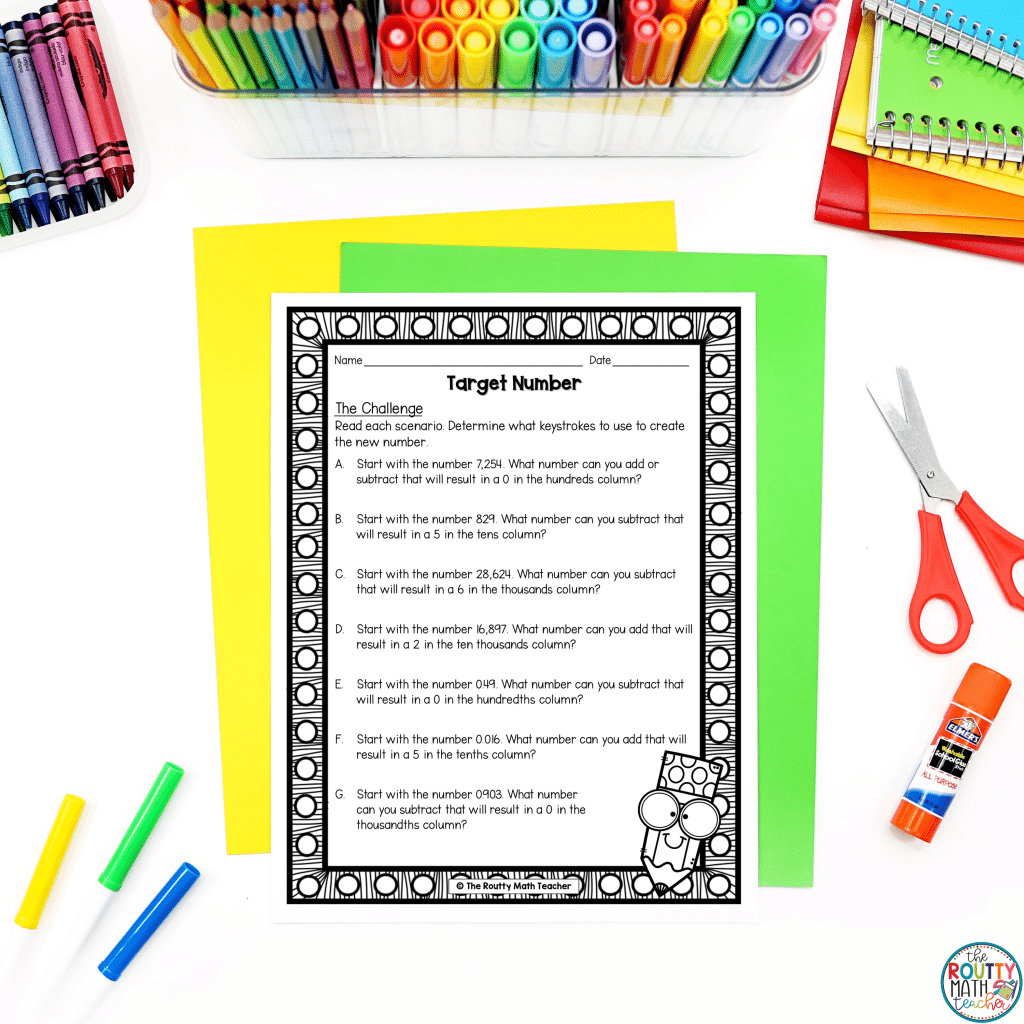
Activity 9: Calculator Challenges
Incorporating calculator challenges into your math stations can allow upper elementary students to deepen their understanding of math concepts while developing their computational skills. Calculator activities engage students in hands-on exploration, problem-solving, and critical thinking while building their technology proficiency skillset.
These activities encourage students to use calculators to investigate, solve problems, and make connections. Consider incorporating the following calculator challenges into your math stations:
- The Broken Calculator Challenge: In this challenge, students are shown an image of a calculator with only three or four working buttons. Students then determine how to use the remaining keys on the broken calculator to create specific values, such as using +, x, 2, and 3 to achieve a value of 8.
- Calculator Corrections: This task requires students to determine how to correct a calculator mistake without clearing the calculator. Using the calculator, students determine how to fix a mistake, check the answer, and make adjustments as necessary. After completing the task, students can justify the changes they made. For example, Brandi wanted to enter the number 4265 into her calculator. By mistake, she typed 4165. Without clearing her calculator, how can she fix her mistake?
- Target Number: For this task, students represent place value in numbers, determine what number to add or subtract to reach the target number, and use the calculator to check their process. For example, students are given the following directions: Start with 7,254. Find a number to subtract that will result in a 0 in the hundreds column.
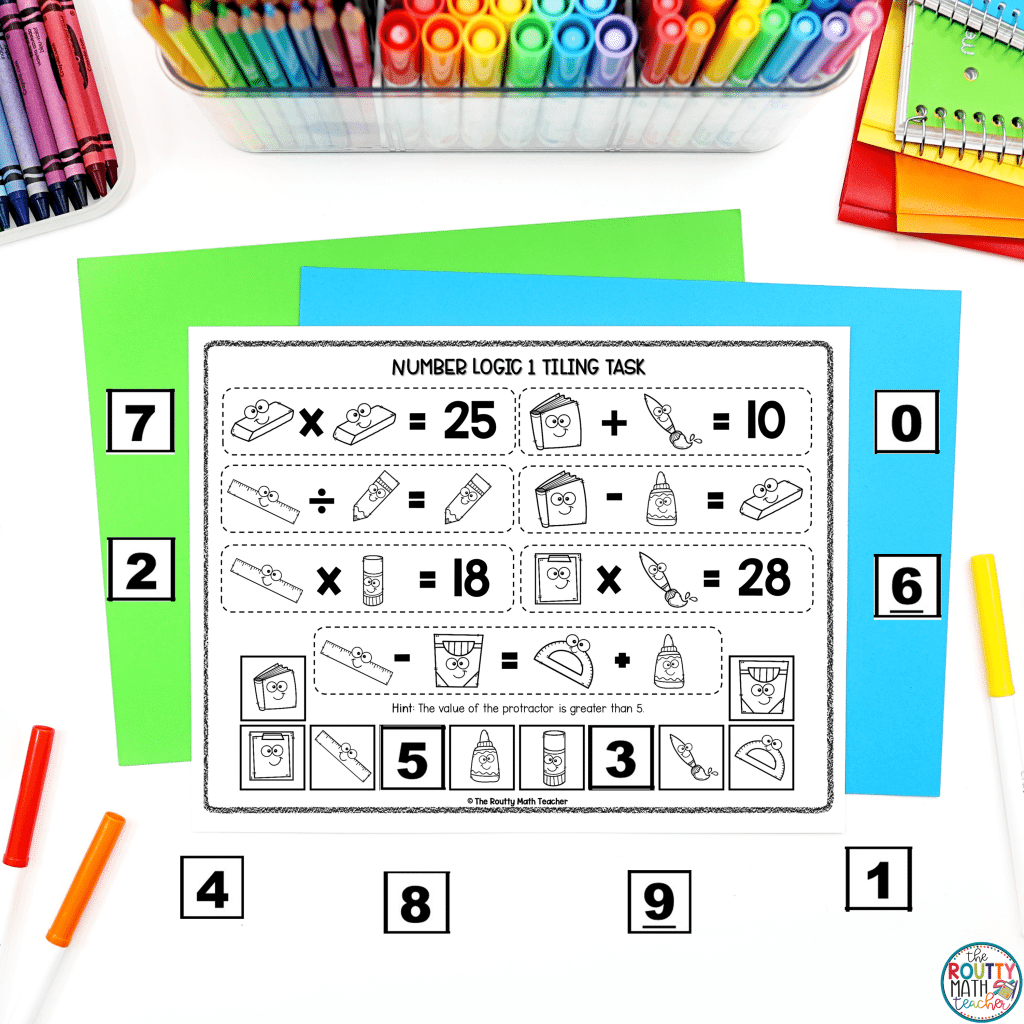
Activity 10: Problem Solving and Critical Thinking
Problem-solving and critical thinking are essential life skills for students to develop. Engage your students in meaningful and challenging math experiences by incorporating problem solving and critical thinking activities into your small group math activities. Click here for a list of problem solving activities; that encourage students to think critically, analyze situations, and apply their mathematical knowledge to real-world scenarios.
A Shift in Thinking
While I never found a way to make reading workshop exciting, math workshop was my students’ favorite part of the day.
Integrating various small group math activities into the rotation was the key to keeping students engaged in learning and wanting more.
If you’re new to math stations, the best way to get started is to choose 1-2 new activities to implement. Consider adding another activity after students are comfortable with the previous activities and staying engaged with minimal support.
Adding new small group math activities gradually will help maintain order during the rotation and save your sanity! If you’d like more tips and tools for managing math stations, download the Math Station Management Toolbox using the form at the bottom of this post.
Next Steps
Math station rotation boards are an excellent organizational tool for implementing the small group math activities above. This visual display helps students understand the structure of the math station rotation and enhances their independence and accountability.
The small group math activities shared above can be assigned to specific stations on the rotation board. Then, teachers can use the math station rotation board to effectively monitor student progress as they rotate through various math stations.
Experiment with these small group math activities and adapt them to meet the needs and interests of your students, ensuring math station time is an exciting and transformative experience for all.
Sound Off!
What are your favorite small group math activities? Respond in the comments below.



